声明:转自ourdev.cn原帖地址:http://www.ourdev.cn/bbs/bbs_content_all.jsp?bbs_sn=4547125ourdev.cn上的帖子转自http://bbs.mydigit.cn/read.php?tid=168216 正文:
花了近20米,买了一个20字节的内存。注意,是"字节"!
其实这是70年代国产的磁芯存储器。我一直都想收藏一块这种存储器,这次终于有了机会。此内存为纯手工制造,其飞线技术实在令人惊叹!!!
磁芯存储器是华裔科学家王安的发明。在那个年代,这种发明可谓是突破性的,堪称计算机史上的里程碑。大家可以自己搜索一下王安的资料。
下面看图!
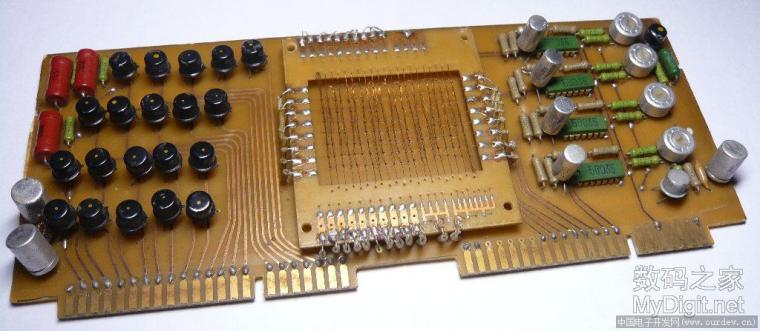


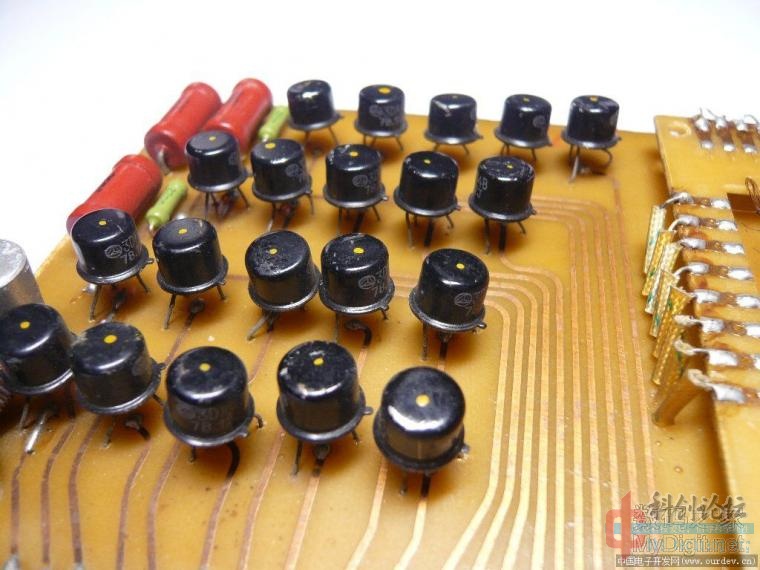





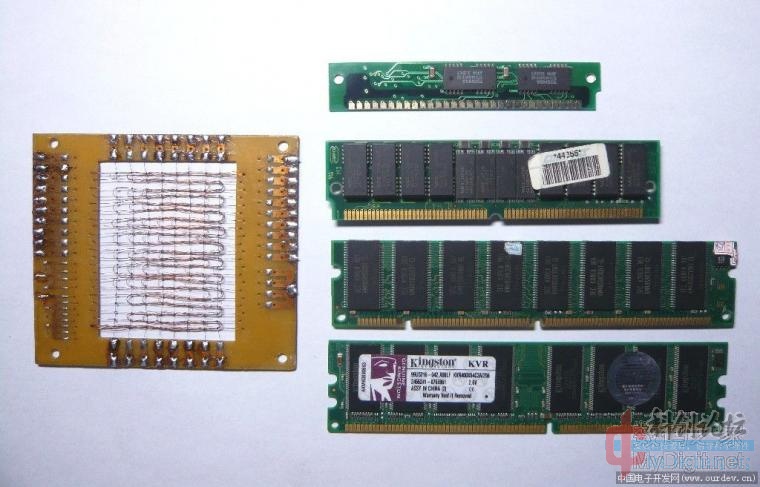
这是德国人做的同样产品:
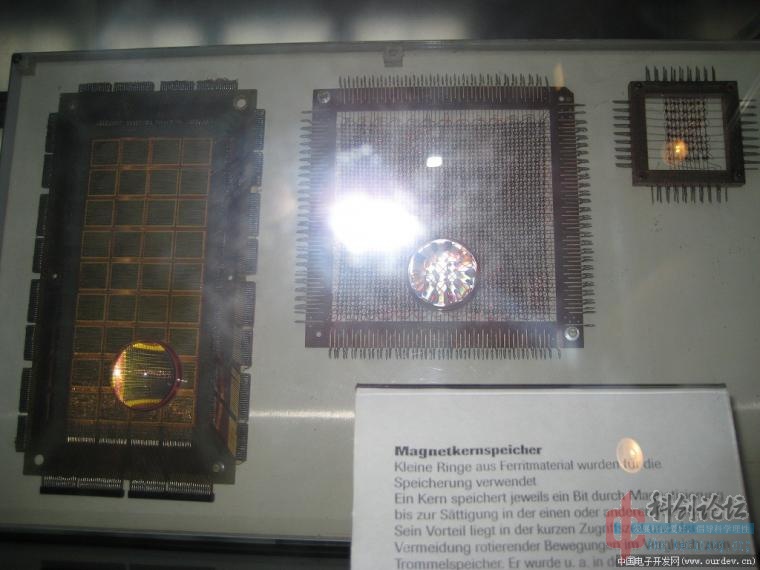
美国人的,看看差距:
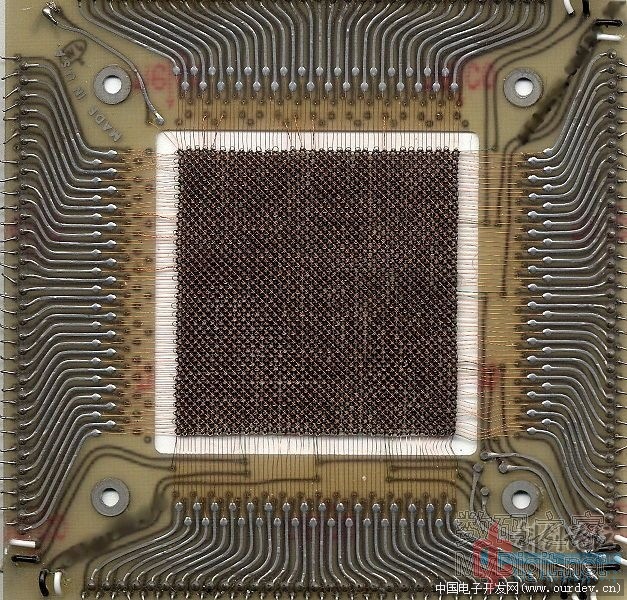
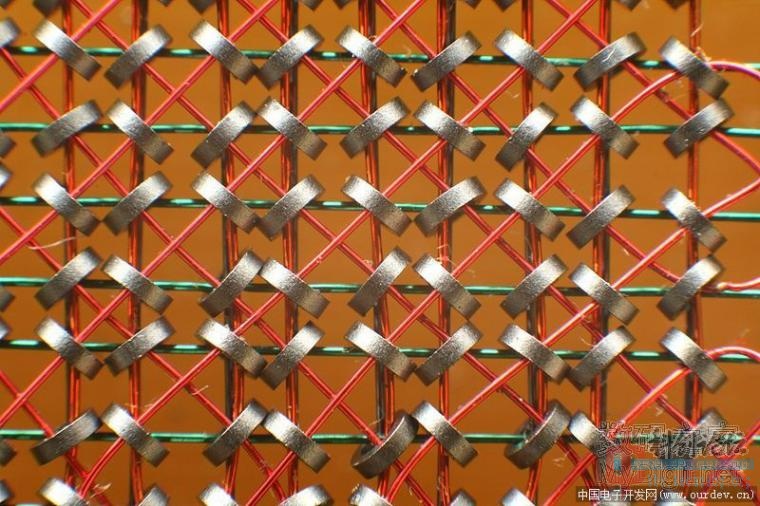
最后贴一段原理:
![ourdev_615052INDD6R.gif]()
The diagram illustrates an array of rings threaded on a grid of wires,
X1 to X4 and Y1 to Y4. If a sufficiently large current is passed along the wire X3,
then a magnetic field is generated around the wire and all the cores threaded on the wire in the X3 row will become magnetised.
They will remain magnetised when the current is switched off.
Similarly, if a large current is passed along the wire Y3, all the Y3 cores will become magnetised.
If a small current is passed along the wire X3, the field produced is not sufficient to have any effect on the cores.
For a given arrangement, there is a particular current which is just sufficient to magnetise the cores.
Now, here comes the clever bit.
If a current equal to half this magnetising current is passed along X3 and another half current is passed along Y3,
then only the red core at the intersection will receive the full magnetic field.
The red core will be magnetised but all the other cores will be unaffected.
If the direction of the currents in X3 and Y3 is now reversed,
then the direction of magnetisation of the red core will be reversed, but again, no other cores will be affected.
So far, we have been able to select a particular core and set it into one of two possible states,
equivalent to "0" and "1".
It doesn't matter which direction of magnetisation we chose to represent a "1"
but we do need to be able to detect which of the two possible states a particular core is in. How can we do this?
The diagram shows a third wire (the sense wire) threaded through all cores.
Now, when the core changes its magnetic state, the magnetic field inside the ring suddenly flips direction.
This moving magnetic field generates a small electrical current in the sense wire,
which can be amplified and detected.
So, if we write a "1" to a particular core and this core is in the "0" state,
the the field will flip and a pulse will be detected in the sensing wire.
On the other hand, if the core was in the "1" state,
writing a "1" would have no effect and no pulse would appear on the sense winding.
In this way, the state of a particular core can be detected.
Note that the act of reading core memory is destructive.
In normal use, the value read would have to be stored and then the core would have to be remagnetised in its original state.
Although the action of reading is destructive, once written,
core memory will retain its contents indefinitely (or for a very long time).
It does not require any power to maintain its contents.














200字以内,仅用于支线交流,主线讨论请采用回复功能。